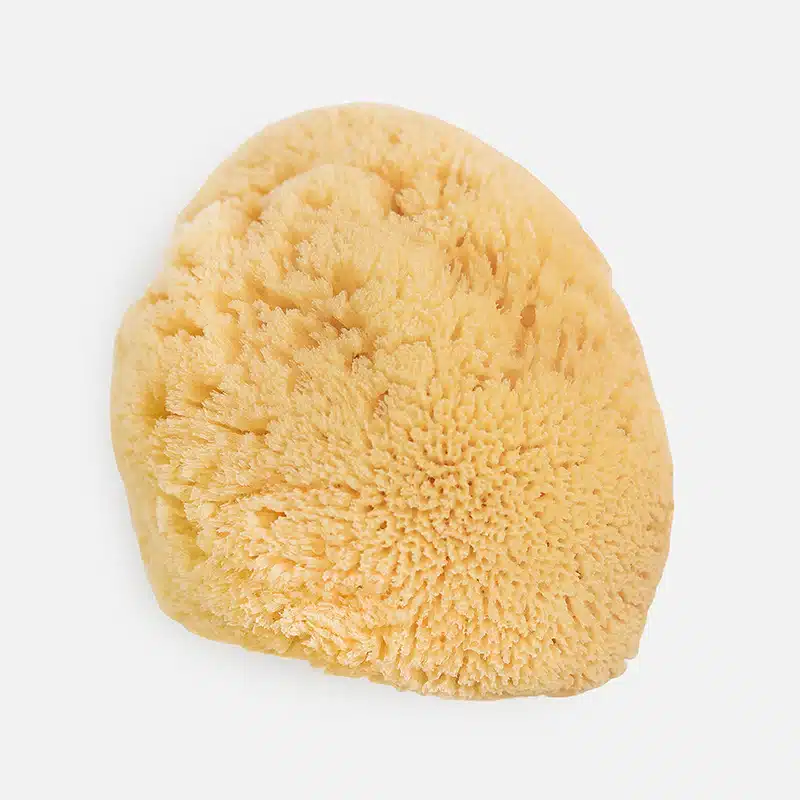While renovating a house, the color palette is the first thing people decide. And even though a unique set of colors can make a house stand out, nothing can replace texture.
By adding this subtle difference to your walls, you can have a room that oozes effort and creativity. The decorative technique of adding texture is also one of the most inexpensive ways to give your home a touchup.
Sponge painting ideas are all over the internet because of their effectiveness. Just one textured wall gives the house depth and complexity that cannot be attained otherwise.
But just where to start with this project, and more importantly, what sponge to use? In this article, we discuss the different sponges available in the market and their benefits.
Is Natural Or Synthetic Sponge Best For Painting?
Before you start sponge painting, it is important to figure out what kind of texture you want on the walls. If you want a symmetric result that looks flawless, a synthetic sponge would be the best.
These are artificial sponges that are made of polyester, or polyurethane. The soft yellow sponges that give a uniform result are made of polyester. However, the polyurethane sponges have a more abrasive side.
On the other hand, natural sea sponges are the favorite among painters. That’s because they have been used for centuries to give the most natural result. As natural sponges are organic, they give a more randomized pattern, creating an age-old look.
Types Of Natural Sea Sponge
While painting with sponges, the choice of natural sea sponges is often unilateral. But since these were once living creations, they are unique by themselves.
Paying attention to each kind and selecting the one you love should take time, as the result depends on it. Here are the three major kinds of sea sponges
1. Wool
If you are looking for something that gives uniform results and is easy to use, wool sponge is your answer. These sponges are soft to the touch and perfect for blending and colorwashing.
The pores also radiate from the center with a consistent texture so a lot of the surface area can be used. With a wool sponge, you can easily create a ton of different textures on the walls.
2. Grass
The surface of a grass sponge is quite different from other sponges. They have a somewhat oval shape with a nap formed. Grass sponges also have hairs growing in the same direction, giving a uniform look to the paint with their repetitive pattern.
With continuous use, the hairs become matted and require frequent washings to stay usable. If you have a small project, a grass sponge might be the ideal choice because of their inexpensive nature.
3. Cultured
The third, and least popular kind of natural sponge to be used for painting is cultured sponges. They are quite similar to wool sponges but have different qualities that make them more desirable. For one, their pores are much finer in structure.
These sponges are also harder than grass or wool ones, so they are not used for blending purposes. Cultured sponges are particularly useful in creating a granite texture, as they are resilient to wetness. They are also used to create a stippling effect on walls.
Benefits Of Natural Sea Sponge
Sea sponge painting has become quite popular as they offer plenty of benefits. For one, the technique requires very little skill, as anyone can try their hands at it.
The materials are also inexpensive and do not need professional tools. An entire wall can also be easily painted in a very short period, especially if you have a big sponge.
By painting your home with a sponge, you give the walls an illusion of depth and character. A lot of techniques can also be applied while painting, ensuring unique results each time. Sponge painting is also great for older houses with signs of repair and damage, as it hides the flaws.
Sea Sponge Painting Technique
The texture of using a comes from the pores of the sponge. As the base coat of paint dries, the sponge is dipped in the accent color and applied to the wall gently. Do not press the sponge hard as that will not reflect the texture. The sponge should also be dipped on one side and not coated completely.
Just like any other painting tool, the sponge will need to be recoated after a while. Make sure you do not create a regular pattern with the sponge, so dab them randomly and space them apart.
Summing It Up
Sponge painting is a brilliant way to give your walls some dimension. It will also hide the flaws in an old home. The technique is also quite easy. But remember to use natural sea sponges to get a unique and casual outlook.
If you want a diverse look for the walls, get a wool sea sponge, as they are perfect for blending. However, even a cultured sponge looks amazing with the right application. In the end, the choice depends on what aesthetic you want.
So, comment below and let us know your preferred sponge for painting!












